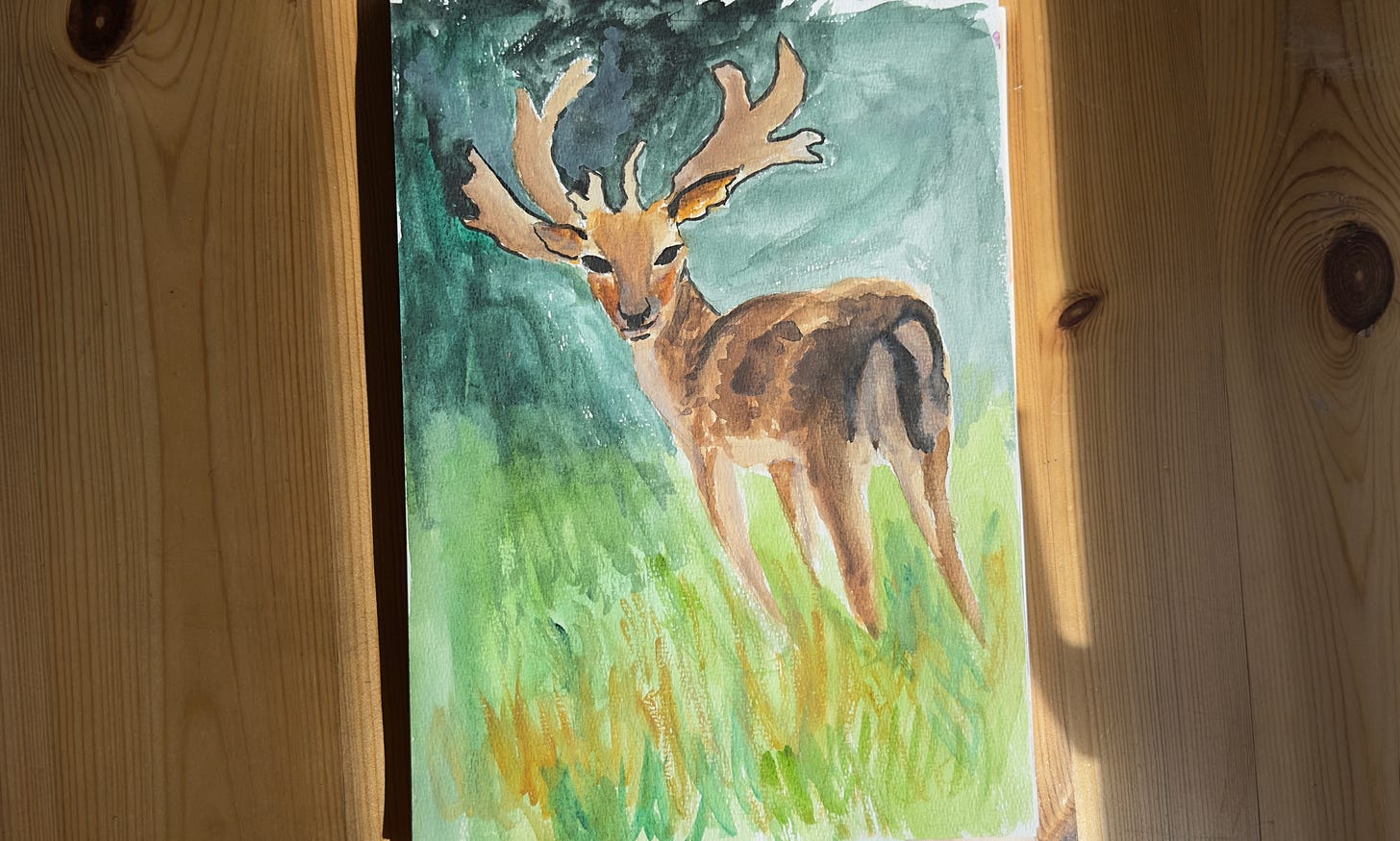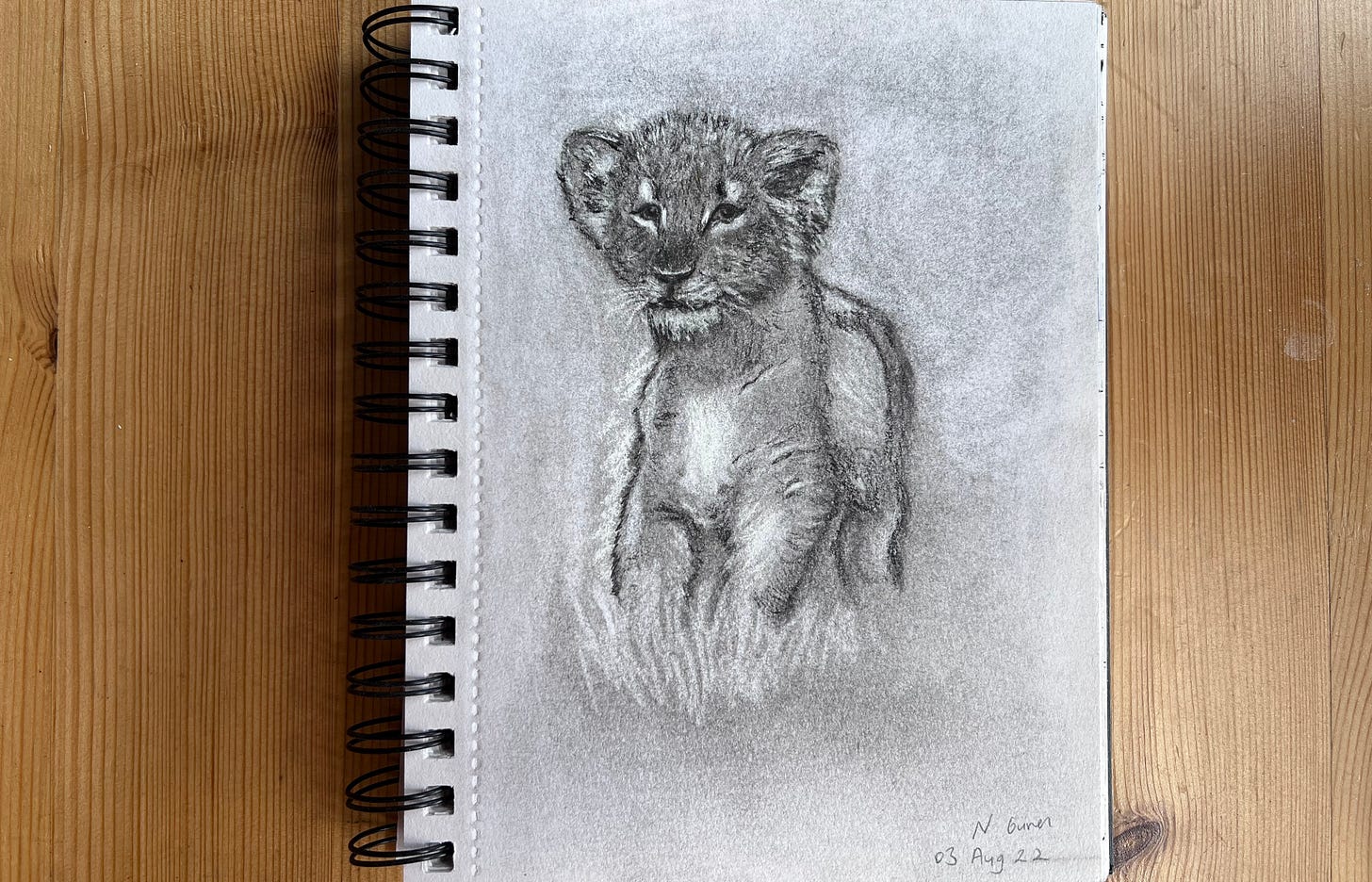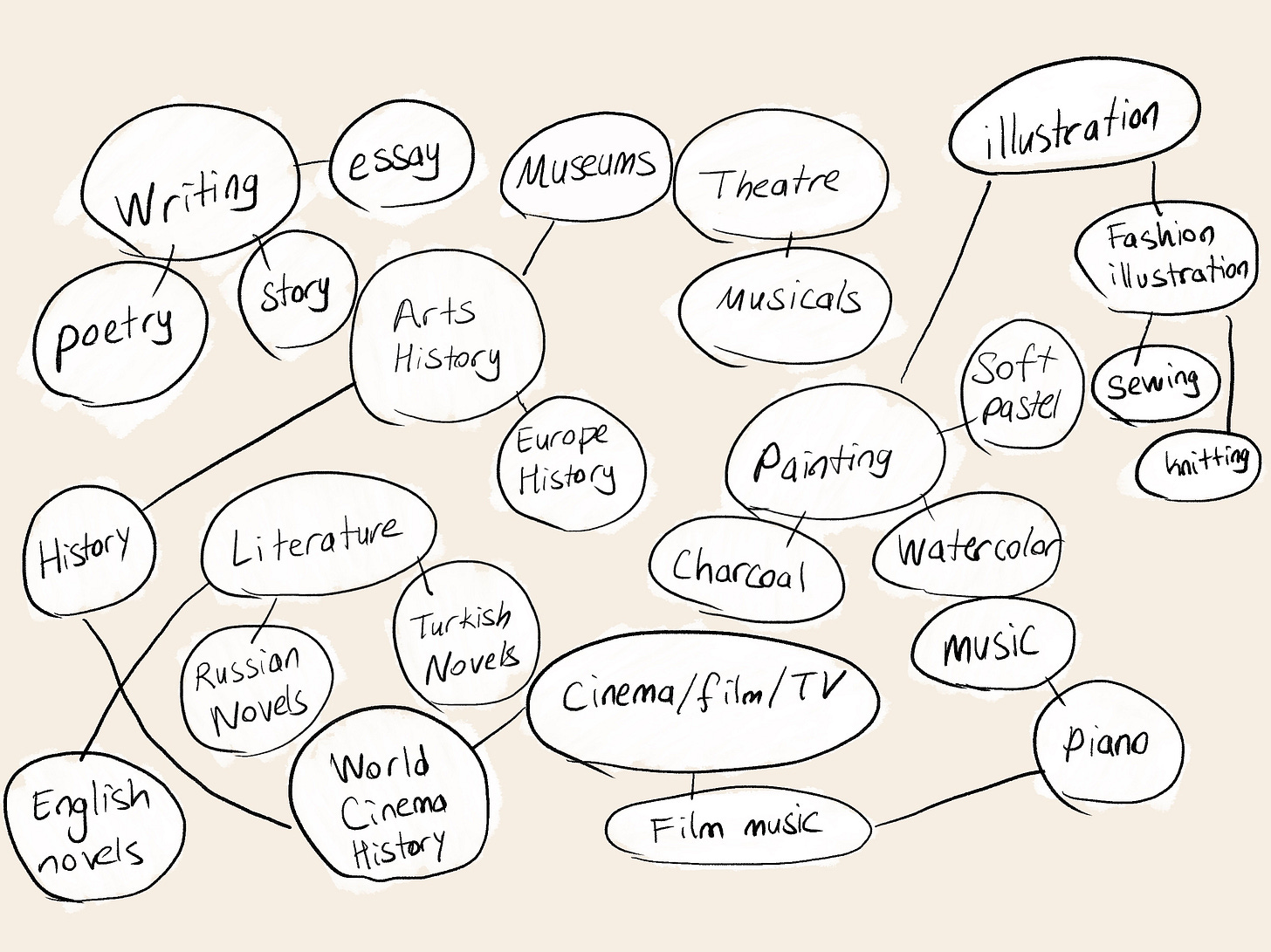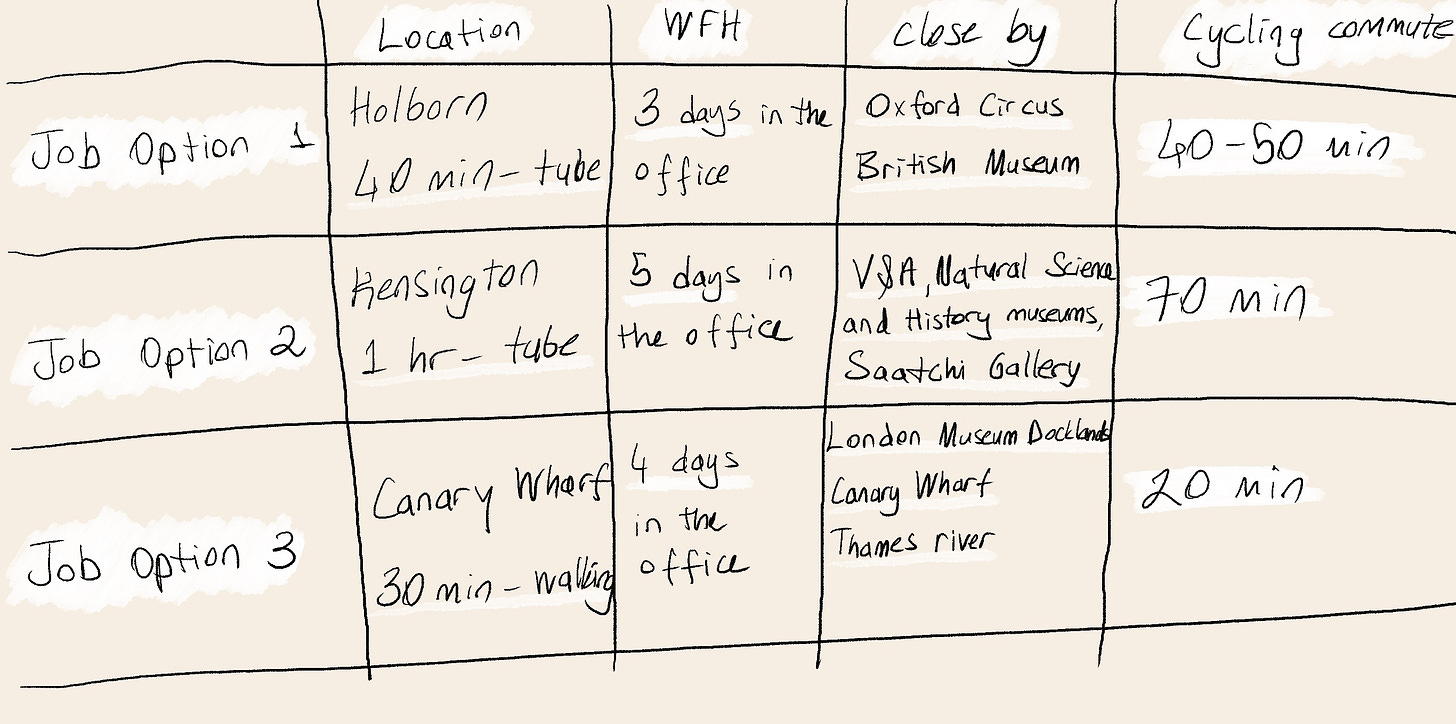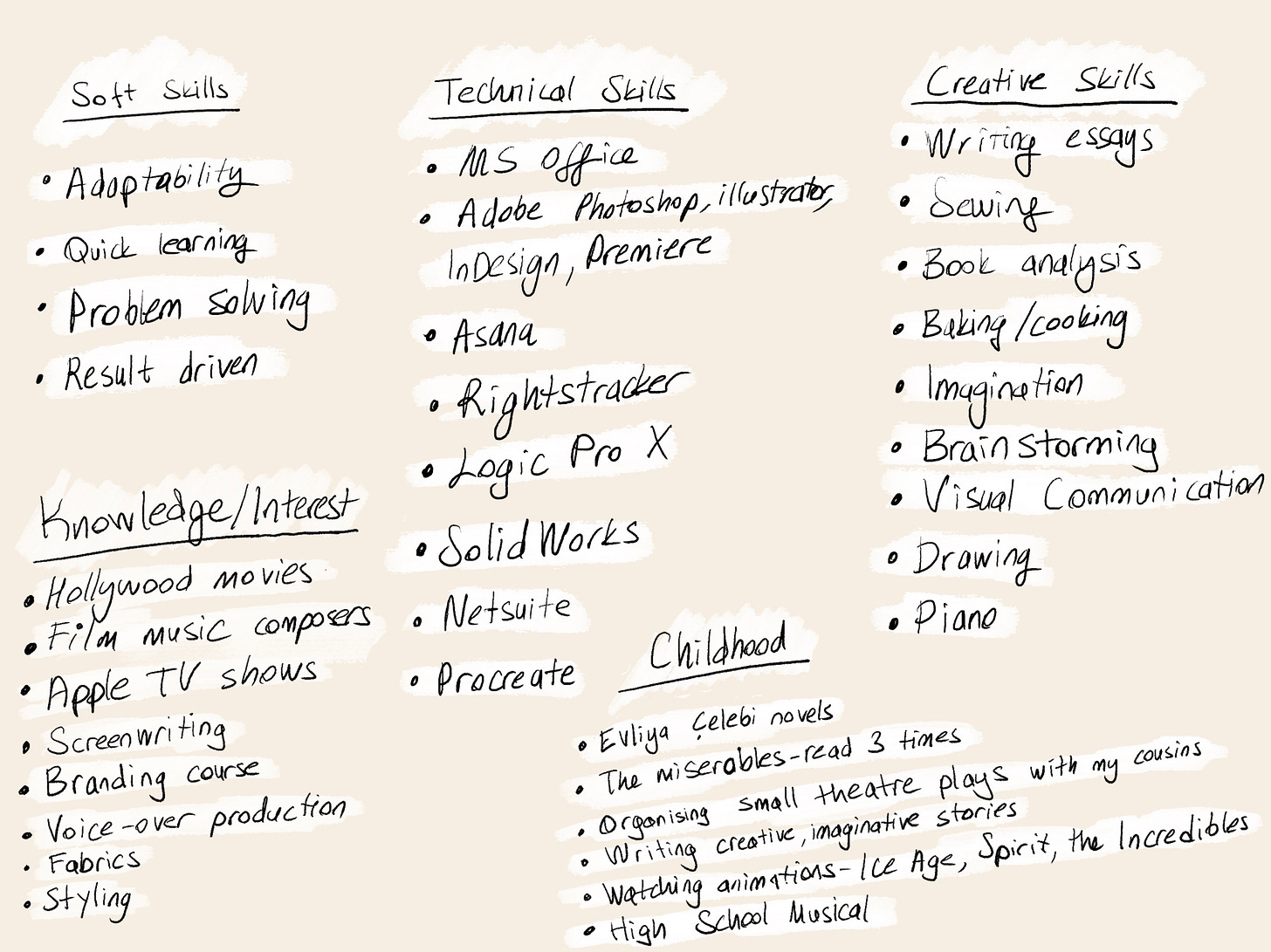The Whiteboard Method: A Practical System for Organizing Your Creative Chaos
From Artist's Block to a Life Roadmap: A Guide to Creative and Career Clarity
Hello there! I’m Nur, and I write about productivity tips, creative reflections, and book/film/TV show reviews. This one will be under the umbrella of Productivity. I hope you find the Whiteboard Method as useful as I do, as it's a great tool for designing a career, a business, an education, or your dream life.
The first part below provides a little backstory on how I learned about the Whiteboard method. If you’d like to jump right into the practical information, feel free to skip to the next section!
My intro to the Draftsmen channel, Marshall Vandruff, and the Whiteboard Method
In 2022, while I was working at Belstaff, one Saturday, I just missed painting so much. My perfectionist brain, which likes to prepare for everything 200%, was saying, “You need to practise this and that, watch this and that tutorial.” I didn’t listen to any of it, opened Pinterest, searched for a deer photo, and without looking at what I was drawing—with my pure attention on the photo—I drew it and painted it the way I felt at that moment. I liked what I created, and it was the start of a phase where I got back into drawing and painting.
It all started one day when I discovered a podcast with James Gurney, the writer of Color and Light, on a channel called Draftsmen. From that day onwards, for almost three to four months, I absorbed nearly all of their content. If you don’t know about the Draftsmen channel, I highly recommend watching, even if you’re not interested in painting—there are some really fun intellectual conversations going on.
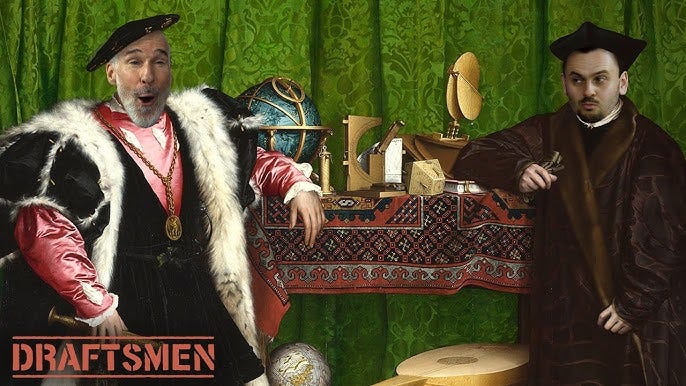
That channel helped me in many ways. It introduced me to Aaron Blaise and his animal drawing courses, which I think are phenomenal. He’s an animator for studios like Disney and has led an interesting life, going on safaris in Africa to draw lions and other wild animals on location. But the most interesting, unexpected, and incredibly helpful thing that channel gave me was the Whiteboard Method.
Draftsmen is co-hosted by Stan Prokopenko and Marshall Vandruff. After listening to Marshall’s intro to what the Whiteboard Method is, I went to his website and purchased the full version. It’s such an interesting thing that sometimes you find the most useful things in the most underrated, unexpected places. It’s the recording of the original course he gave at a college in 2014. It was created to help his students, not originally intended to be an online course, and he put it on the website some years later.
Marshall says almost all pros he has met use a whiteboard or something similar.
Here’s the link to the first part, if you’d like to check it out. And here’s the paid Part II video, where he lets you set your own price. I highly recommend both.
What is it then, the Whiteboard Method?
The Whiteboard Method, in a nutshell, is a form of multi-criteria decision-making. It helps you lay out all the things on your mind and then evaluate and reach the purest version of whatever you’re trying to decide on. Marshall says he was first exposed to the use of whiteboards at advertising agencies, and he teaches it to his students to help them design their education for their career. It can be used as a roadmap to design anything: a career, an education, a dream life, or a business plan. Without further ado, I’ll be explaining how you can practise this method below.
1- Put Your “Loves”
So, we’re starting with getting the stuff out. It may look a bit chaotic, but that’s how it's supposed to be, so don’t panic. Put all your “loves” there. These could be skills, interests, and hobbies. It’s a gradual process to get to the point where it looks organised.
2- Put Your Criteria
Your family and close ones, your lifestyle choices, your long-term personal goals, your friends, your current location, and where you’d like to move in case you want to. These are the things we should consider designing our lives around. The example I've created below is for choosing a job, but you could create a criteria list with any goals.
3- List Your Current and Future Skills
You could be a great “people person,” or you might speak several languages. Put all your creative and technical skills, including future ones (in case you’re in the process of learning something new), childhood interests, and specialized knowledge in something that you might think no one cares about.
4- Last Step: Look from a Distance
What do you see? What points catch your eye? It’s there to show you your mind, tangibly. Marshall says that the whiteboard works much better than a notebook, Photoshop, or anything else because it is physically there, hanging on the wall, looking at you when you’re happy, sad, motivated, annoyed, disappointed, hopeful… You’ll see your thoughts about yourself—about what you want, what you’re good at—through the eyes of your different moods. That will enable you to see it all from many different versions of you, and eventually, you’ll be much clearer about which ones you actually want, which ones you actually need, and you’ll eliminate the unnecessary noise. Connect the ideas, and you’ll be surprised how some combinations can serve your wants and needs all in one package.
The Whiteboard method presents your abstract internal chaos right in front of you. This constant visual presence pushes you to create a structure that corresponds with your external reality, becoming a map that you design and adjust as you explore.
It evolves gradually. Do not expect it to be perfect; it is quite the opposite. You just keep inputting, deleting, inputting, deleting, and eventually, it reaches a phase where you know what you are doing and where you are heading—and it’s a great feeling. Don’t be afraid of the mess; just dump it all. Even the things you think are impossible for you or that you don't have time for. The more you believe that your effort carries you to your next step, the more you create time for your goals—time you were unaware existed. And eventually, those vague, abstract ideas become a solid reality in your life.




